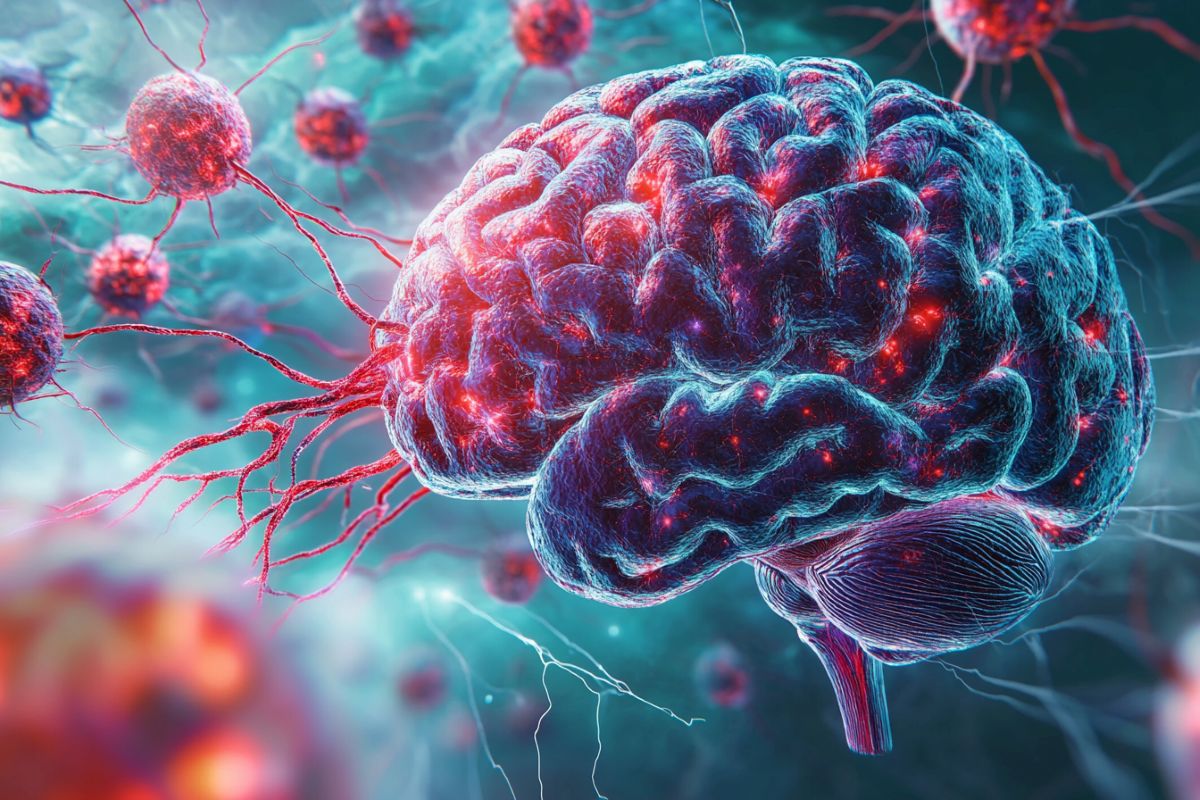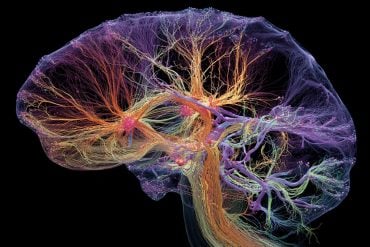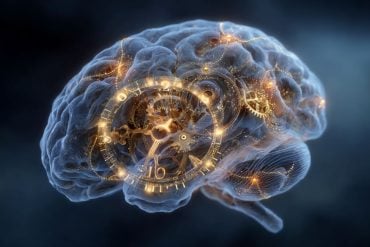Summary: Researchers have created a four-dimensional brain map that reveals how MS-like lesions form, providing new insights into the earliest stages of the disease. Using a marmoset model instead of mice, they tracked lesion development in real time with MRI imaging, identifying vulnerable brain regions weeks before visible damage occurred.
A key finding was the role of a specific type of astrocyte expressing the gene SERPINE1, which clustered near brain borders and influenced immune responses and myelin repair. These discoveries could help detect MS earlier and guide future treatments to slow or stop disease progression.
Key Facts
- Early MS Detection: A new MRI signature reveals brain regions at risk for MS damage before lesions form.
- Astrocyte Role: SERPINE1-expressing astrocytes may contribute to both brain repair and disease progression.
- New Research Model: A marmoset model better mimics human MS, offering real-time tracking of lesion formation.
Source: NIH
Using an animal model of multiple sclerosis (MS), researchers at the National Institutes of Health (NIH) have created a four-dimensional brain map that reveals how lesions similar to those seen in human MS form.
These findings, published in Science, provide a window into the early disease state and could help identify potential targets for MS treatments and brain tissue repair.

The researchers, led by postdoctoral fellow Jing-Ping Lin, Ph.D., and senior investigator Daniel S. Reich, M.D., Ph.D., both at NIH’s National Institute of Neurological Disorders and Stroke (NINDS), combined repeated MRI imaging with brain-tissue analysis, including gene expression, to track the onset and development of MS-like lesions.
They uncovered a new MRI signature that can help detect brain regions at risk for damage weeks before any visible lesions occur.
They also identified “microenvironments” within affected brain tissue based on observed patterns of neural function, inflammation, immune and support cell responses, gene expression, and levels of damage and repair.
“Identifying the early events that occur after inflammation and teasing apart which are reparative versus which are damaging, can potentially help us identify MS disease activity sooner and develop treatments to slow or stop its progression,” said Dr. Reich.
MS is caused by the body’s immune system attacking the protective covering of nerve fibers, called myelin. This leads to inflammation, loss of myelin, and formation of “lesions” or “plaques” within the brain tissue.
Most of what is known about MS progression has come from analysis of postmortem human brain tissue, usually obtained decades after the initial onset of disease. This means missing early changes that occurred prior to the onset of symptoms.
To mimic the conditions of the human brain, the researchers opted not to use a mouse model for MS, instead advancing a model that uses the marmoset, a nonhuman primate. Compared to mouse brains, marmoset and human brains have a higher ratio of white matter (the “wires” of the brain) to gray matter (neuronal cell bodies).
The marmoset model creates multiple lesions that closely resemble those seen in human MS and that can be tracked in real time using MRI imaging. Because these lesions can be induced experimentally, the model offers a look at the earliest stages of inflammation and immune responses that lead to MS-like demyelination.
One key player identified was a specific type of astrocyte, one of the support cell types in the brain, that turns on a gene called SERPINE1 or plasminogen activator inhibitor-1 (PAI1). They found SERPINE1-expressing astrocytes in vulnerable brain borders before visible damage occurs, clustering near blood vessels and the fluid-filled ventricles of the brain and signaling future areas of lesion development.
These astrocytes also appeared to influence the behavior of other cells near the lesion area, including the ability of immune cells to enter the brain and contribute to inflammation, as well as the precursor cells involved in myelin repair.
Given that SERPINE1-expressing astrocytes accumulated at the edges of growing lesions, where damage happens but healing also begins, their potential dual role in coordinating signals that could lead to either tissue repair or further damage was an unexpected wrinkle that will require further study.
It’s possible that the earliest responses could be a part of a protective mechanism that becomes overwhelmed as the injury progresses. It’s also possible that the same mechanism could itself become disease-causing.
“If one imagines a fort under siege, initially the walls might hold off the attack,” said Dr. Reich. “But if those walls are breached, all the defenses inside can be turned against the fort itself.”
These findings may also have implications for brain injuries beyond what is seen in MS. While there are different types of focal brain injuries, including traumatic brain injury, stroke, inflammation, and infection, there is a finite number of ways the tissue can react to injury.
In fact, many of the reactions seen here to inflammation, stress, and tissue damage are likely to be common across injury types, and the brain map created in this study can act as a resource to allow comparisons to be made in a more human-like context.
The scientific teams are building a new model of a different autoimmune condition affecting brain borders. They are also looking to expand their data set to include aged animals, which could help improve our understanding of progressive MS, a disease state with a significant and unmet therapeutic need.
Funding: This study was supported in part by the Intramural Research Program at the NIH with additional support from the Dr. Miriam and Sheldon G. Adelson Medical Research Foundation and the National Multiple Sclerosis Society.
About this multiple sclerosis and brain mapping research news
Author: Carl Wonders
Source: NIH
Contact: Carl Wonders – NIH
Image: The image is credited to Neuroscience News
Original Research: Closed access.
“4D marmoset brain map reveals MRI and molecular signatures for onset of multiple sclerosis-like lesions” by Daniel S. Reich et al. Science
Abstract
4D marmoset brain map reveals MRI and molecular signatures for onset of multiple sclerosis-like lesions
INTRODUCTION
Multiple sclerosis (MS) is a complex disease characterized by focal inflammation, myelin loss in the central nervous system, and eventual neurodegeneration. The precise cause of MS remains unclear, but the disease involves an inappropriate immune response and subsequent failure to repair myelin.
Although MS therapies have been effective in controlling peripheral inflammation, understanding the cellular dynamics of lesion progression during early phases is crucial for developing treatments that promote timely remyelination and repair.
RATIONALE
Current understanding of MS pathology is largely derived from postmortem human tissue studies or rare brain biopsies, which capture disease at a single, often late, time point. To address this limitation, we used a clinically relevant model, the common marmoset (Callithrix jacchus) with experimental autoimmune encephalomyelitis (EAE), to study MS-like lesions.
This model closely mimics MS lesion development and evolution, offering insights that are transferable to the clinical setting. Although structural magnetic resonance imaging (MRI) is noninvasive and effective for monitoring lesion changes, it lacks the specificity required to reveal the cellular and molecular diversity within lesions.
Therefore, we integrated longitudinal MRI, histopathology, spatial transcriptomics, and single-nucleus RNA profiling to examine the signaling profiles involved in lesion development and resolution.
RESULTS
We identified five microenvironment (ME) groups—related to neural function, immune and glial responses, tissue destruction and repair, and regulatory networks at brain borders—that emerged during lesion evolution. Before visible demyelination, astrocytic and ependymal secretory signals marked perivascular and periventricular regions, which later became demyelination hotspots.
We identified an MRI biomarker, the ratio of proton density–weighted signal to T1 relaxation time, which was sensitive to the hypercellularity phase preceding myelin destruction. At lesion onset, we observed a global shift in cellular connectivity, particularly in extracellular matrix–mediated signaling. Early responses involved the proliferation and diversification of microglia and oligodendrocyte precursor cells (OPC).
As lesions developed, EAE-associated glia were replaced by monocyte derivatives at the lesion center, with persistent lymphocytes seen in aged lesions. Concurrently with demyelination, reparative signaling modules appeared at the lesion edge as early as 10 days after lesion establishment.
We also noted an overrepresentation of genes involved in the senescence-associated secretory phenotype (SASP) at the brain borders and the formation of concentric glial barriers at the lesion edge, prompting perturbation analysis to contextualize EAE-associated changes and identify potential therapeutics to protect tissue and enhance repair.
CONCLUSION
We identified a SERPINE1+ astrocytic subtype, acting as a secretory hub at the perivascular and periventricular zones, which underlies the onset of lesions in both marmoset EAE and MS. Our work offers a spatiotemporally resolved molecular map as a resource to benefit MS research and to guide identification of candidates for therapeutic intervention.






